Inverloch History are pleased to offer a number of items for sale.
Profits from all sales go towards the Society’s continued efforts to catalogue, protect & archive our growing collection of historical artifacts.
Ceramic Coasters
Promoting the Mosaic Panels at the Rotary Clock Tower outside the Community Hub in A’Beckett St, Inverloch.
$25 for a box set of 4 ceramic coasters, with two sets to choose from.
These Coasters are available for sale online only. Click here for Inverloch History orders or enquiries page.


Canvas frame prints & flat paper prints.
Our exhibition images are for sale as timber framed canvas prints & flat paper prints.
The majority are in Landscape orientation & a few are in Portrait.
These prints are the perfect medium for turning our restored historic images of Inverloch into works of art & conversation starters that will suit any room in your home or workspace.
All images have been digitally restored by our in-house curator to bring new life back into these important heritage images.
Note that while the images displayed here contain an Inverloch History watermark, the prints delivered to you will not.
Where to view & order our images
- This Inverloch History website.
Review the many historical images displayed below on this page & take note of the # number (ranging from #1 to #48) of the image(s) that you are interested in purchasing a print of.
Then, when you are ready, click here for Inverloch History orders or enquiries page.
2. The Inverloch Information Centre has a selection of our Canvas Prints available for viewing & sale.
Multiple sizes & formats available
We will work with you to create a stunning canvas or flat print to your requirements.
Some images are of higher quality than others due to the original photo, so discussing your request is paramount for a good result.
Option 1) Framed Canvas Prints
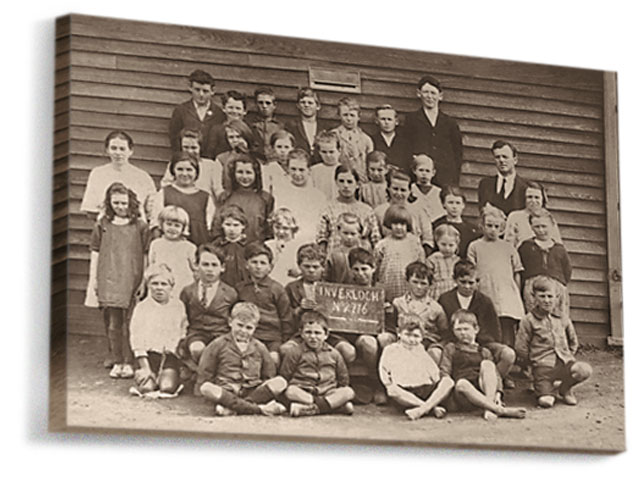
- Framed canvas prints can be ordered & quoted at numerous sizes.
- Either landscape & portrait orientation to suit the original image.
- Final images have no added text or watermark
- Made using satin canvas with a solid softwood frame, wedged mitre joint and nylon hanging point. Each canvas frame is 35-40 mm in thickness.
- Easy to clean with a gentle vacuum using a soft brush attachment without any water or cleaning fluids required.
- Either pickup from Inverloch or have shipped via Australia Post.
Option 2) Flat Prints

- Flat prints can be ordered in numerous sizes
- Either landscape & portrait orientation to suit the original image.
- Final images have no added text or watermark
- Printed on 160 gsm paper with a satin finish.
- Supplied rolled in tube.
- Either pickup from Inverloch or have shipped via Australia Post
Flat Print Pricing:
A4 size prints (image area 200×287) at $45 each.
A2 size prints (image area 570×400) at $65 each.
A1 size prints (image area 584×831) at $98 each.
A 10% discount is applied on the second or more images of the same size.
(These prices are correct as at December 2024)
Images available

Inverloch in the 1930’s, with plenty of space and parking. If you look carefully, just above the ‘Herald’ sign, you can see the top of the Post Office sign. Holmes’ shop was located where baker currently is (5 A’Beckett St).

The total population of the Inverloch Primary School – Grades 1 to 8 in 1922 shown with their teacher. Some children have bare feet, some look puzzled, a couple even unhappy looking, whilst some are proud. These old school photos have an endearing quality to them.

This photo is an absolute beauty. The contrast between the characters in the photo – their looks, their poses, is simply fascinating. Added to the considerable interest is the motor bike and sidecar, the bicycle – and then of course, the lady with a baby and small child in sidecar. Bill Young is third from the left.

Mrs. Cal Wyeth with her horse, complete in her proper riding outfit. The setting is near the double storey section of Pine Lodge. Many activities were offered to the guests, which amazingly included shooting! They also offered golf & tennis.

Photography in the holidays. We are told the two ladies are Jean Richmond and Jess’ Robertson, clearly enjoying their break from the daily grind of work.

This delightful picture shows Pine Lodge at its peak in the 1930’s, with the well-heeled relaxing. Note the design on the beach umbrella. All was well in the world. During World War 2 Pine Lodge became a Royal Australian Navy Hospital.
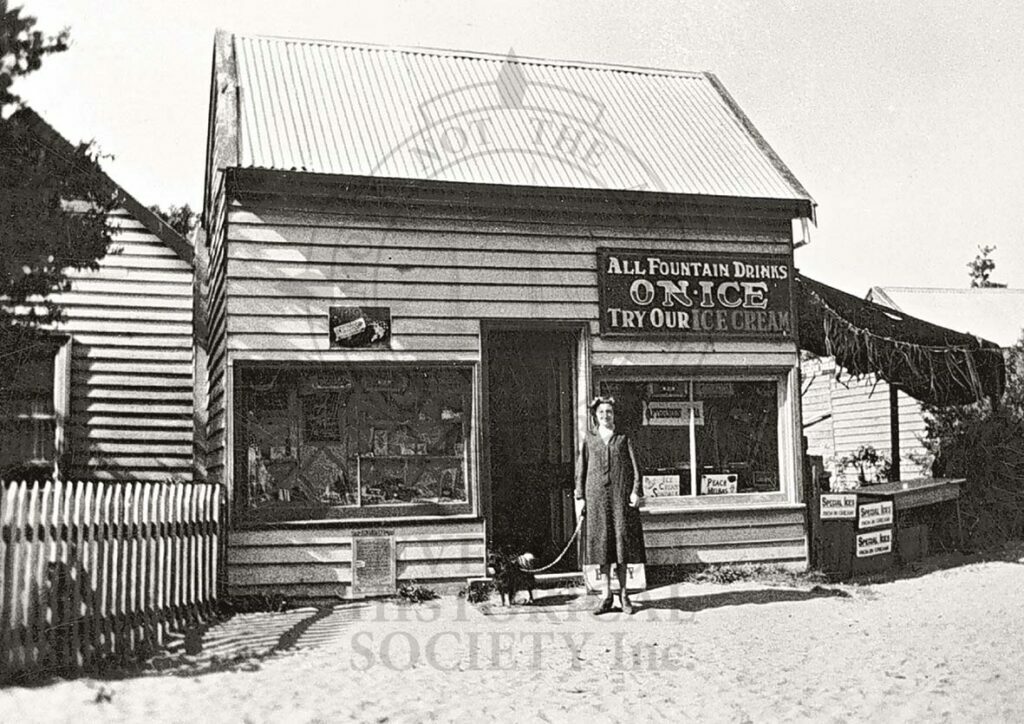
Was located near where the Esplanade is today.

The wall built in 1934 with sustenance labour, commenced below St.Kilda Street and was part blue stone, part sandstone. The wooden groynes were added to try and stop sand movement.This photo was taken from near Venus St. Large trees in the right of the picture on the far shoreline, mark the spot of Beilby’s farm
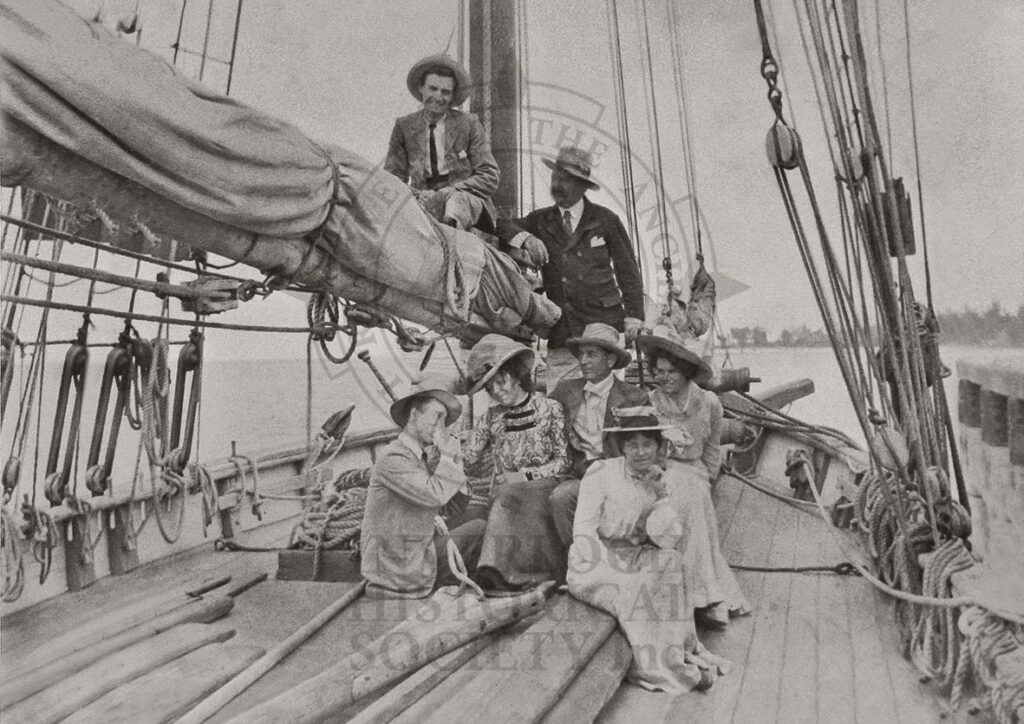
This delightful photo with ladies and gentlemen dressed in all their Edwardian glory, is taken on the deck of the “Ripple” ketch, so famous to Inverloch’s history. The Edwardians were noted for their hats, and the people here do not disappoint.
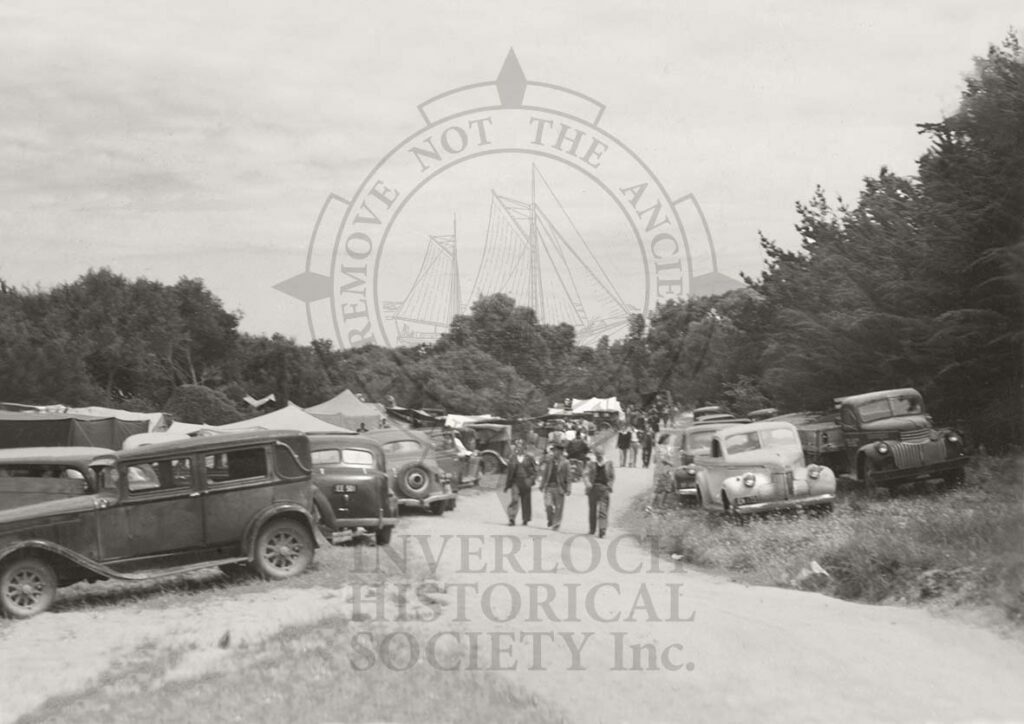
Amidst all the cars can be seen many tents, all in days when camping by the foreshore around the town was permissible – an activity no longer possible after 1977, when the Department of Lands took over the administration of the foreshore.

We believe the date is wrong for this photograph, for some of the cars are 1930 models (right three). The delight in this photo is the contrast between the horse and trap and the new fangled cars themselves. Yet again – men never go out without their hats.

This is a famous picture of the days when coal was brought by cart to Inverloch, loaded onto the boat and shipped to Melbourne. This was the days before the opening of the railway from Nyora to Wonthaggi. The days of Inverloch being described by developers as the ‘Newcastle of the South’ never, and happily, came to an ugly fulfillment.

Here, in all their casuality, the six men give us a delightfully posed snapshot of life in the 1930’s. It is claimed that Bill Young, the Inverloch fisherman is either second or fourth from the left. Any ideas?

Looking like a shot from a Laurel and Hardy movie, we are led to believe that the man at the wheel of the vehicle is Bill Young of fishing fame. This vehicle must represent some kind of conversion of an old car, with a flat tray on the back.

This delightful 1906 postcard tells us about Inverloch’s early beach and foreshore history. Originally starting near the Glade, the ‘pathway’ wended its way towards Screw Creek. Little remains today except for a short portion near the Creek itself.

Dressed appropriately, ready for a good days fishing, the members of the Inverloch Angling Club are seen around 1960, along with their boats and head protection. They’re obviously a keen lot, but of course, aren’t all fishermen!

Four young life savers of the Inverloch Life Saving Club standing proudly with their Australian designed life saving reel. Note the costumes and the hats in club colours. In 1966 the club headquarters were in Anderson Inlet.

From an old postcard, Neil’s Inverloch Hotel is pictured in 1908. It sat at the top of A’Beckett St., in Sandy Mount Avenue. It was de-licensed in 1922 and became the Two Views Guesthouse. For many years it was a local landmark,and was finally demolished in 1968.


Proudly standing in front of his International bus, the driver with hat that all men traditionally wore, either awaits passengers, or has just completed a trip. Wonthaggi was the nearest railway station to which the bus connected

This somewhat misleading title to the picture, shows what we believe are a family at the beach in the 20’s, enjoying the water near the pier. Note the female head covering. The boy at the front looks ….unhappy or startled?

So many early photographs of Inverloch feature the pier. With all the activity at and around the pier, this must have been the Christmas holiday period. Note the crane at the end of the pier. Looking beyond the pier, one can see lots of boats and further activity.

The original Esplanade Hotel & Two Views Guest House.

Built 1872 at Davistown, Brisbane Water, near Gosford NSW, by ship builder Benjamin Davis. Plied between Inverloch and Melbourne from the 1800’s tom 1929

Inverloch had a number of bathing boxes on the beach situated at the end of Abbott Street were one of two shark proof fences protected swimmers. The dinghy in the background was built by William ‘Bill’ Young.

A days boating was very popular on Anderson Inlet, and an easy day on the Inlet, getting ready to go fishing. Note the gas lamp and crane on the old jetty.
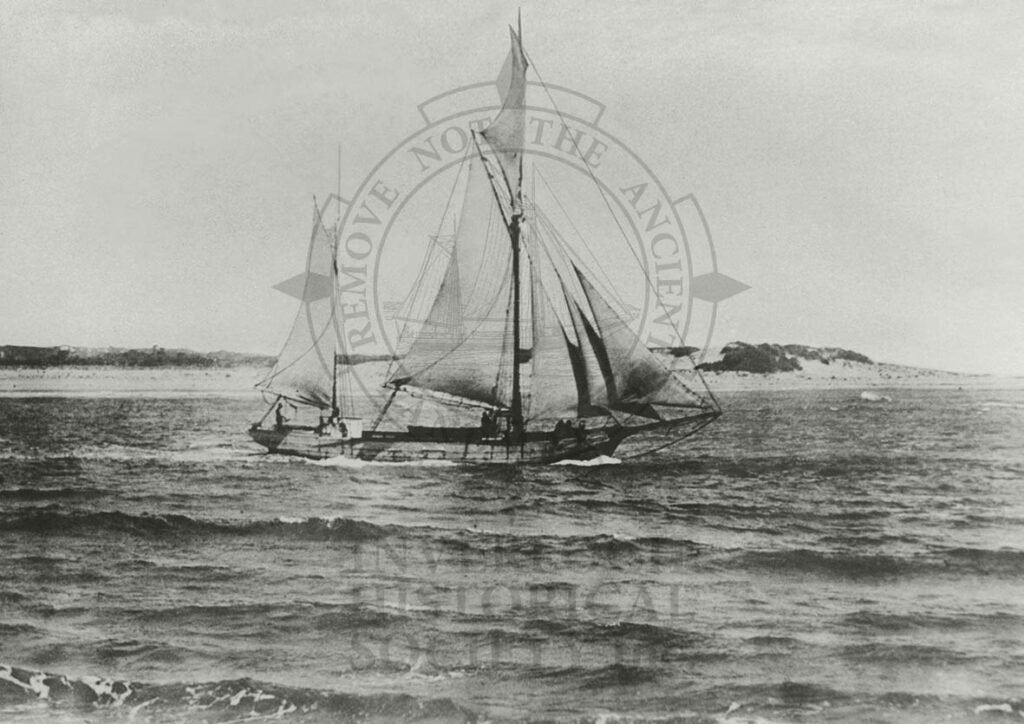
Ketch Ripple would travel to & from Tarwin Lower & Inverloch to Western Port & Port Phillip Bay carrying goods of all sorts, animals & farming equipment, Passengers & their animals carried each way for five shillings (50 cents) overnight, meals supplied. Baggage & dogs carried free. Service ended 1930.

Ketch Ripple had a shallow draft, only 1.55m, ideal for maneuvering up the Tarwin River, sometimes along the river would have to be hauled through reeds etc. by teams of men pulling on long rope hawsers. Animals, farm equipment, and household goods were carted from Little Dock, Williamstown, and Inverloch, Western Port Bay, as the rail only went as far as Wonthaggi.

This is a very old hand coloured postcard from the early 1900’s. The pier is clearly seen, complete with goods shed. Inverloch relied greatly on the ‘Ripple’ for travel, carting goods to and from Melbourne for the survival of Inverloch.


From William “Bill” Jenner’s garage on the corner of William Street, not far from The Arcade of shops. Opposite is the re-built Esplanade Hotel, originally built about 1896. Further up is the General Store owned by Mr.Cross, and butchers owned by Mr.Banks next to the Community Centre built 1897. At the top of the street, Two Views Guest House, till 1952 but demolished in 1968.

First known as Powlett River Railway. At each bridge the train was stopped, engine uncoupled and driven across to test it. The engine then returned, collected the carriages. Such care was taken with passengers they were obliged to walk across and rejoin their carriage. Last train ran 1978.

On the outskirts of Inverloch, another hard but very necessary job on the farm requiring many hands to make light work.
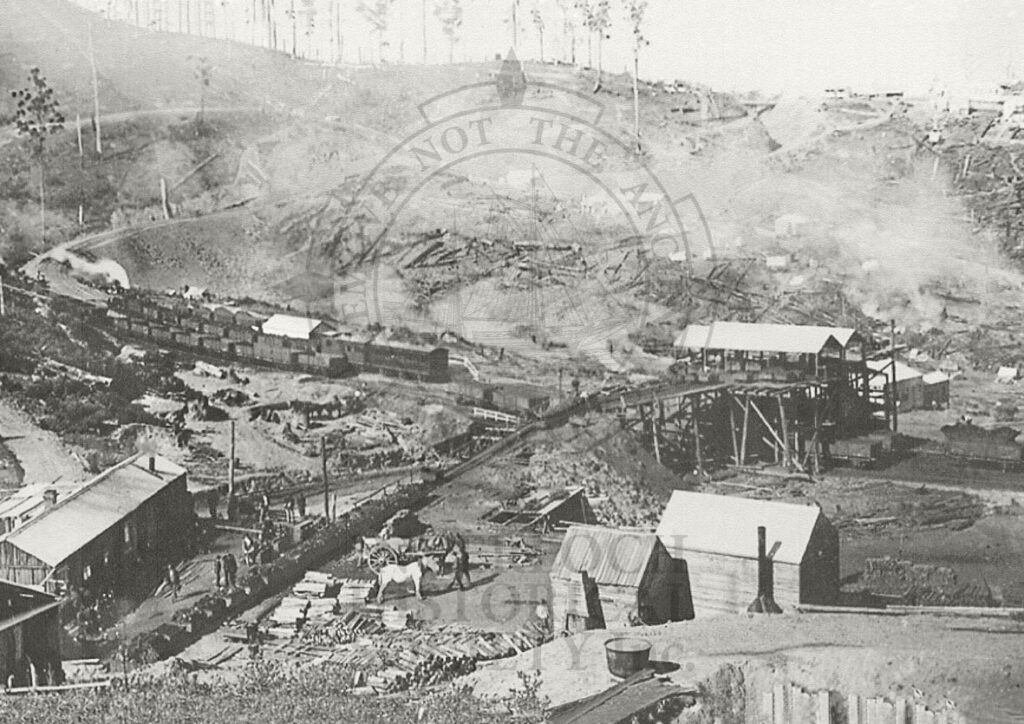
Outtrim, and the area between Wonthaggi and Korumburra had many private coal mines. The rail line serviced these mines but never came as far as Inverloch.

A group of school girls being organised for a trip on Anderson Inlet. A days boating was very popular for all ages.
Note the gas lamp on the old jetty.

This is Inverloch in the 1930’s, plenty of space and parking no trouble. Look carefully, you can see the original Post Office. Holmes’ shop is where the baker currently is now.
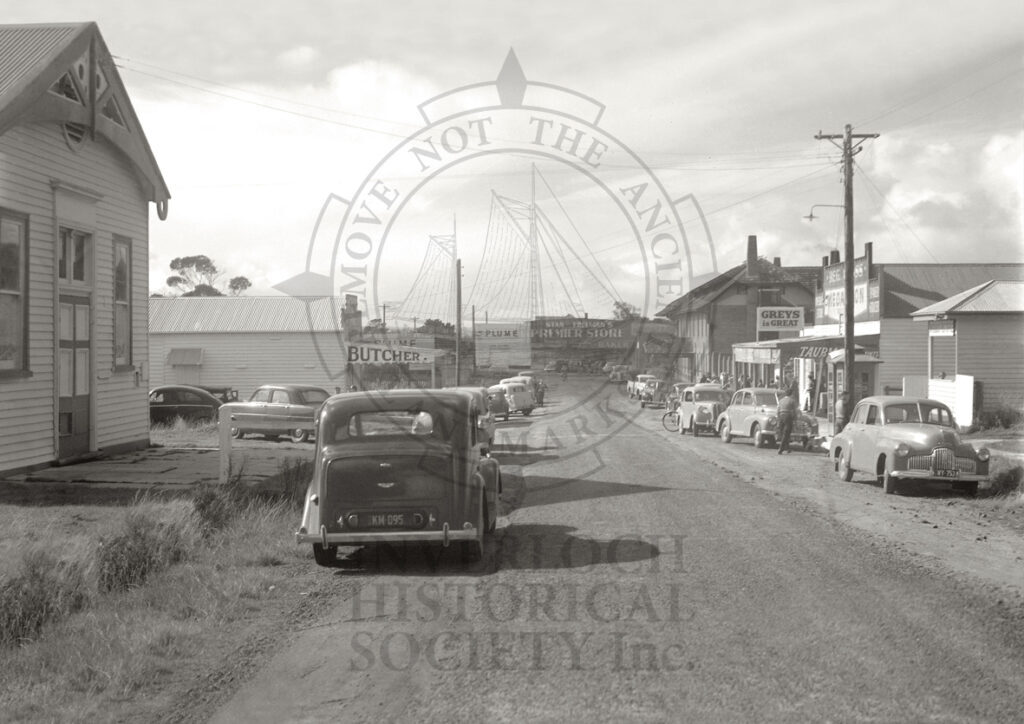
A busy day in Inverloch. The original Mechanics Institute Building on the left. One of two butchers shops, both owned by the same family, but many customers begged to differ.

The Two Views Guesthouse, and Pine Lodge were at there peak in 1930’s. Both holiday destinations. The Wonthaggi to Inverloch, International bus (right) was the main connection, as the rail only came as far as Wonthaggi. Coach trips also very popular.

The Two Views Guest house, situated on Sandy Mount Ave., at the top end of A’Beckett Street. Originally Neil’s Inverloch Hotel, was built in 1908, until de-licensed in 1922. It then became The Two Views Guest House. Was finally demolished in 1968.

Owned by Arthur (Sammy) Nelson and wife Myrtle and situated on The Esplanade near todays Inlet Hotel. You could purchase ice creams, Tarax drinks, and a pot of tea with jam and scones. Weddings, birthdays, and footy-final nights for Inverloch-Kongwak. The billiard table was very popular, many games of cards played infront of the living room fire.

Inverloch’s ‘Grand Prix’ was held at low tide on the back beach by the Northcote Motor Cycle Club on Australia Day, bikes reaching 100 mph. Transporting bikes across Anderson Inlet was on the cray fishing boat ‘Irene’, owned by William Young.
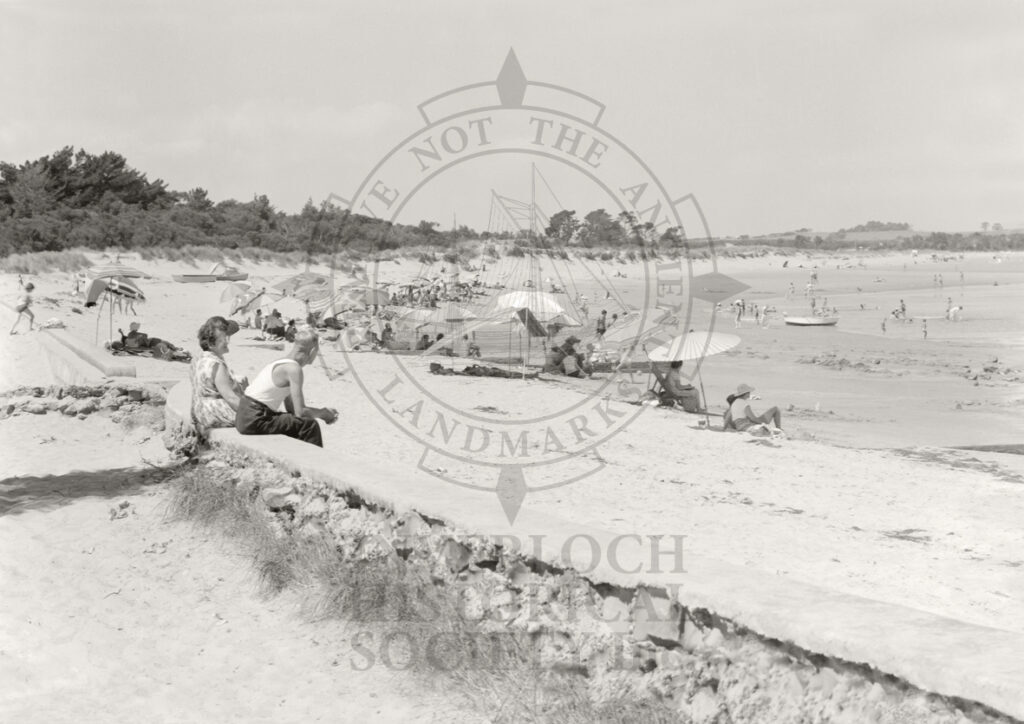
Many families had caravans or camped in their tents amongst the trees along the foreshore. The beach during summer has always been a very popular attraction for the whole family to enjoy.
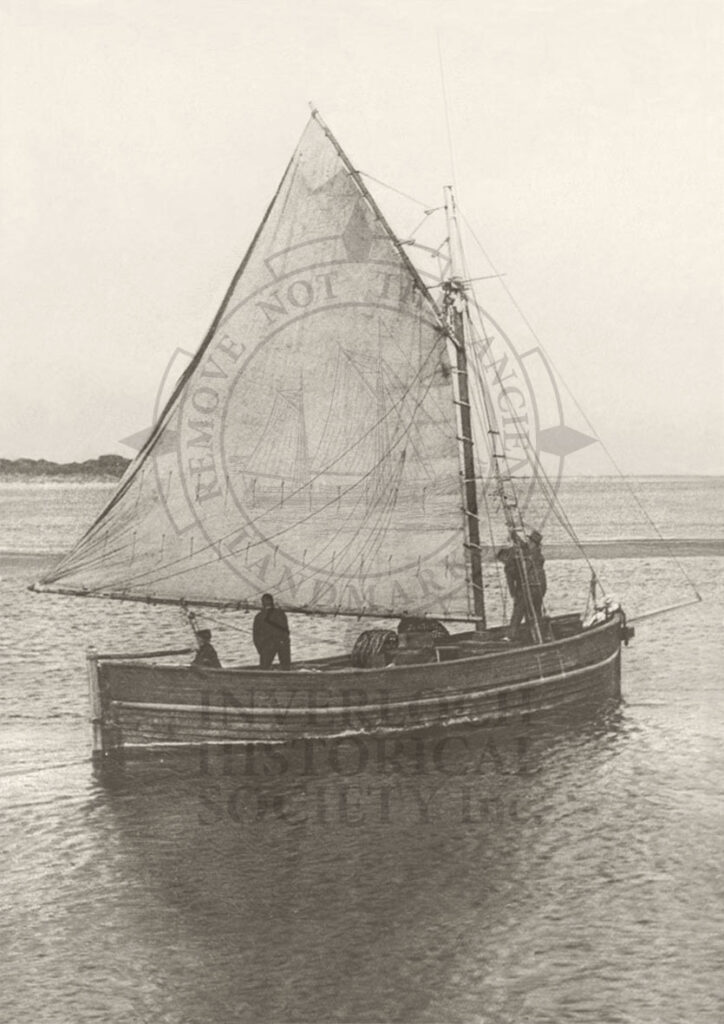
(Predecessor to the Young built versions of Ripple I & 2).


The Ripple was the main supply line for the people of Inverloch & Tarwin Lower from Western Port Bay. The original image is from State Library Victoria, photographed by W.H.Ferguson on a half-plate glass negative.

The central township of Inverloch situated at the shallow entrance to Anderson Inlet, in the Parish of Kirrak, in the Counties of Mornington and Buln Buln. It shows how much the coastline has changed especially around Point Smythe over the years.
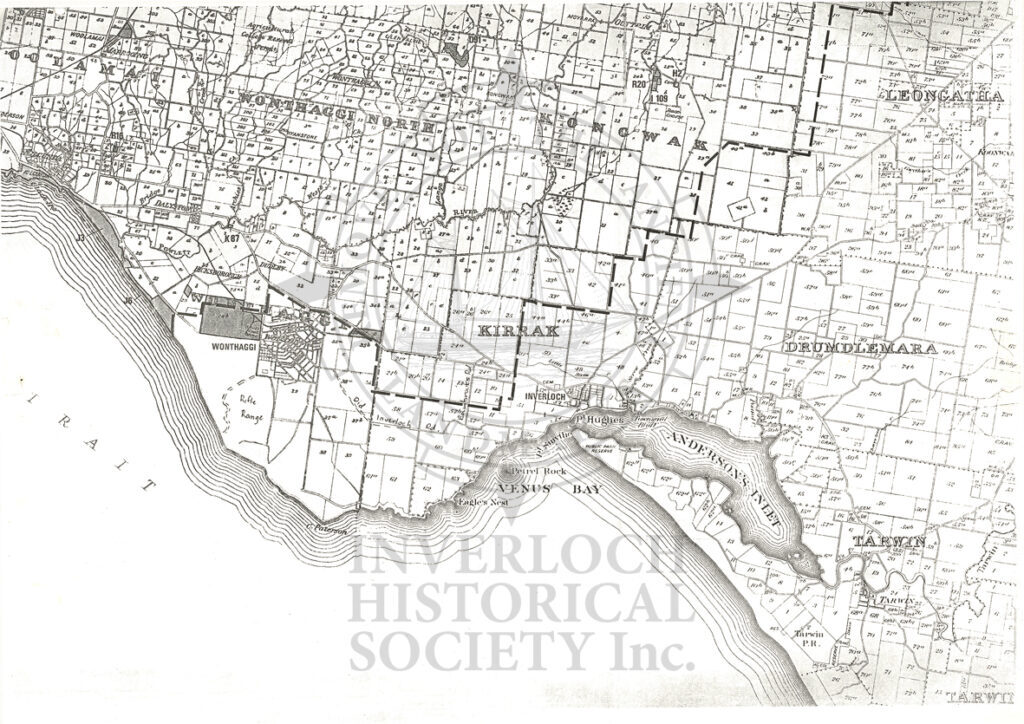
Inverloch central to this map shown in the Parish of Kirrak, and the counties surrounding, from the sea to the hills to our north. Many of the parcels of land here have been either joined together or sub-divided for residential use.

The central township of Inverloch situated at the shallow entrance to Anderson Inlet, in the Parish of Kirrak, in the Counties of Mornington and Buln Buln. The owners are in black, compiled from the 1919-20 rate book.





